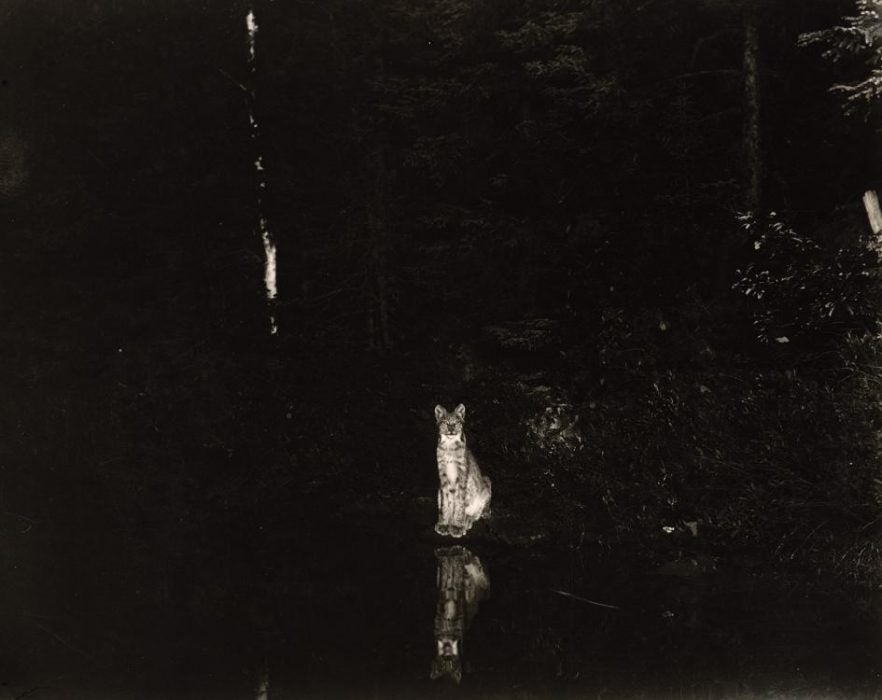When National Geographic Magazine began publication in 1888, it was all text. The now familiar photography-dominated format didn’t appear until 1905. The changeover coincided with the trend of people “hunting” with cameras. The technology of photography had become portable, relatively easy to take into the wildernesses of America or the “savage” landscapes of Africa.
According to environmental historian Finis Dunaway, the new camera-hunters wanted to record what they considered an “authentic past”: “places of savage violence as well as landscapes of natural peace and beauty.” Dunaway argues that by looking at early nature photography we can “explore some of the most significant ideas of nature in early twentieth-century American culture: the virtues of conservation, the fears of a vanishing frontier, the meanings of hunting.”
George Shiras III, one the pioneer wildlife photographers for National Geographic, spoke of the “peculiar mental evolution” of his transition from hunting to photography. He wrote in his 1926 book How To Hunt With a Camera about his own “conversion from gun to camera.” Of course, cameras didn’t replace hunting. The big game hunters, including wealthy and powerful men like Teddy Roosevelt, kept gunning down animals for personal trophies and the natural history museums. Roosevelt was the de facto leader of an elite movement that was supposed to toughen the “white race” through the challenges of the wilderness. The national park system is one result of their efforts.
But in the new century, many of these men also took cameras with them. Or some, like Shiras, now took only a camera. Dunaway writes, “Nature photography reveals the tensions and longings felt by elite American men who worried about overcivilization, who sought to reinvigorate their masculine strength and prowess, who craved intense experience while they criticized the inexorable, destructive march of progress.”

As Dunaway shows, cameras were considered superior to the imperfect human eye. Photographs were also assumed to be more truthful than the drawings and prints commonly used to illustrate natural history books before photography. Dunaway writes:
These men went back to nature, looking for beauty and scientific knowledge in the behavior of wild animals, hoping to save huge tracts of unspoiled land for future generations. The camera promised to resolve their ambivalent and contradictory responses to modernity: it was a machine that could remember, a technology that could preserve nature and primitive past, a device that could mend the ruptures of history and time.
Of course the camera was very much a product of the modernity that caused these elites so much anxiety. It was a means of reproduction “which promised to remember what their eyes could merely see.” Since what they saw was a disappearing world, cameras became their memorial devices.
Get Our Newsletter
The devices were something else, too, Dunaway concludes: “Ultimately, they used the camera to document their own fantasies, to record their temporary crossings of the boundary between nature and culture, savagery and civilization.”







